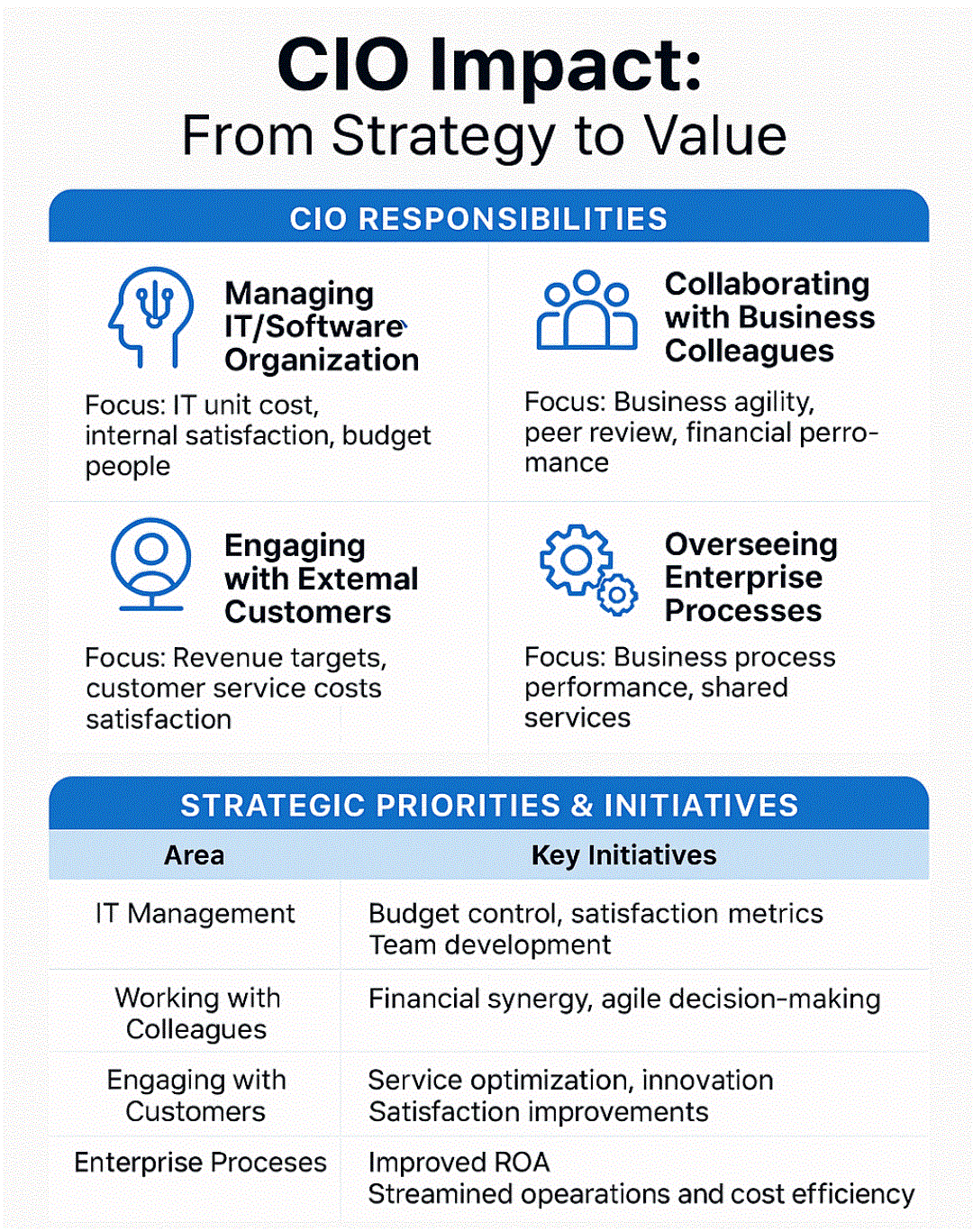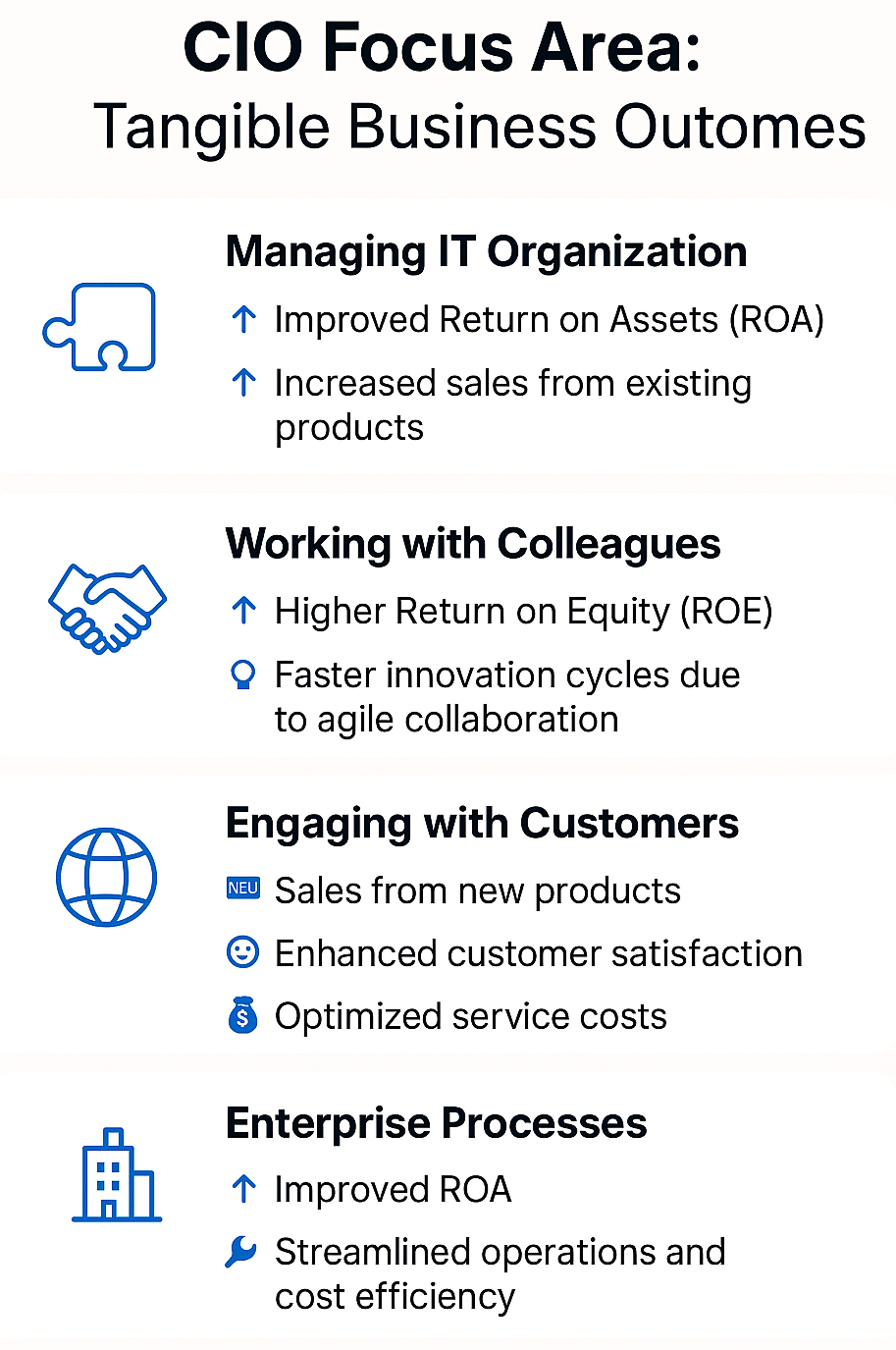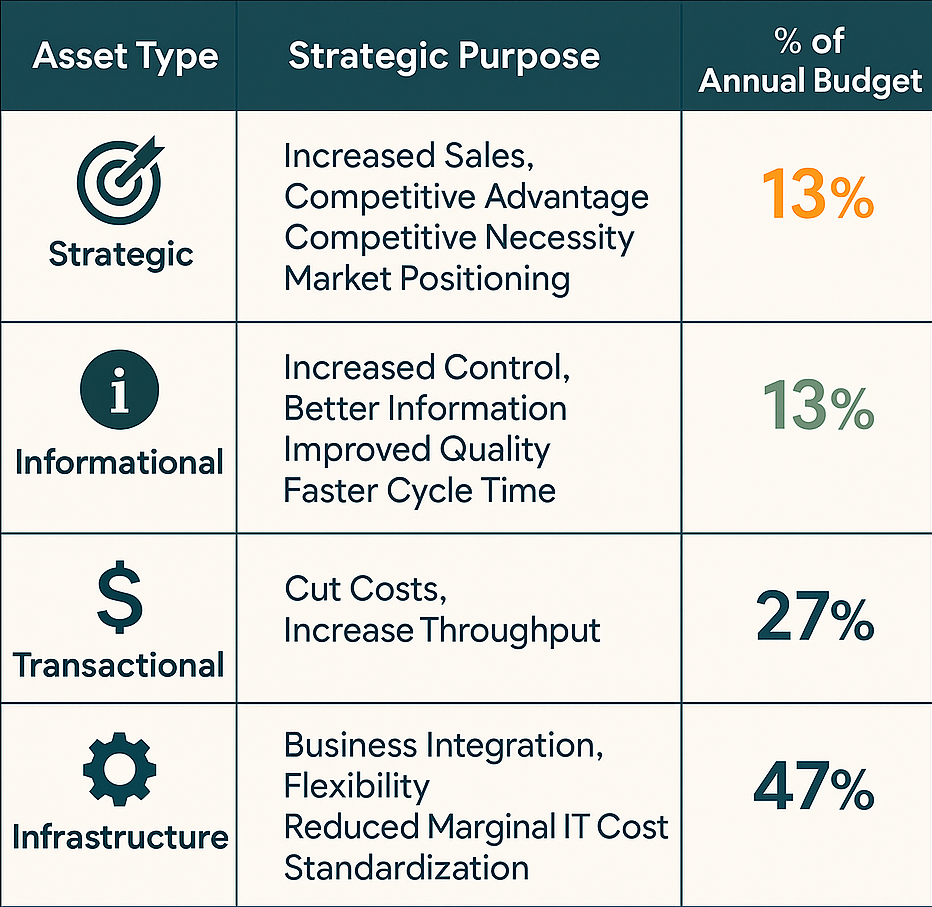From Tech Stewards to Business Catalyst:The CIO's Evolving Mandates
CIOs are now essential architects of enterprise success, impacting agility, customer experience, and competitiveness.
The role of the Chief Information Officer (CIO) has evolved far beyond managing IT infrastructure — it’s now a pivotal driver of business strategy and innovation. CIOs are increasingly shaping digital transformation initiatives, leveraging data & AI, to uncover new revenue streams, and ensuring tech investments align with organizational goals. Their leadership directly impacts agility, customer experience, and long-term competitiveness, making them essential architects of modern enterprise success.
“Today’s” CIOs cater to multiple mandates, combining technical leadership with strategic foresight.
👑 CIO Responsibilities
💸 Business Impact
For a typical 1BN+ enterprise, the IT spend is allocated across various assets including Infrastructure, Applications, and Services.
Infrastructure encompasses network, storage, compute, and security.
Applications can be categorized into Systems of Records (SoR: e.g. ERP, HCM, MDM), Systems of Engagement (SoE: e.g. CRM, Web, Mobile), and Systems of Intelligence (SoI: e.g. ML, AI).
Services comprise personnel providing IT Operations (ITOps), helpdesk Support, Application & Enterprise Software Development and maintenance, Data Engineering and Data Analytics/ML, Security Platform & Posture Management (PAM), Governance/EPMO.
💼 Portfolio Asset Allocation to meet Strategic Purpose
PS: The above infographics were generated utilizing artificial intelligence (AI) tools.


